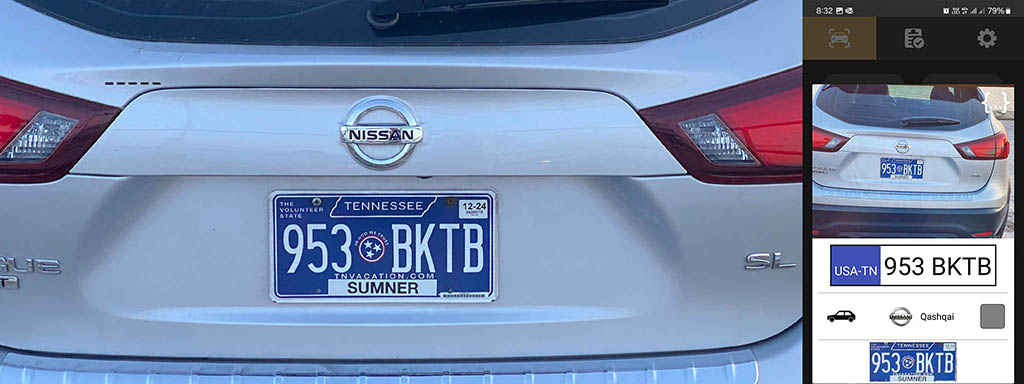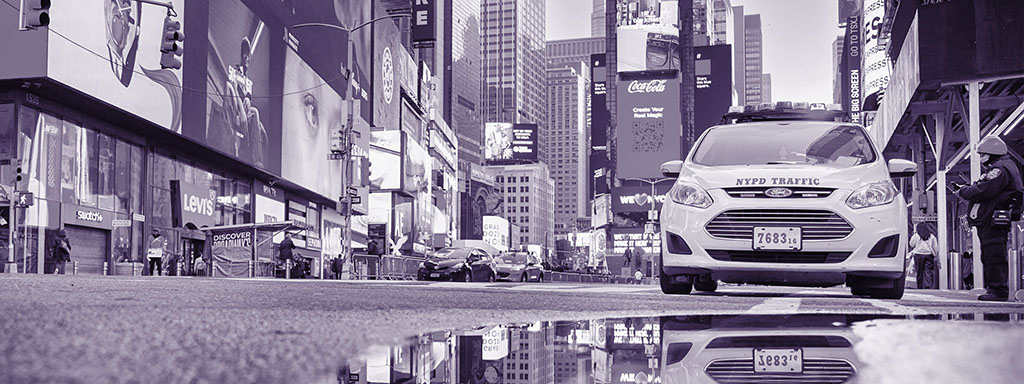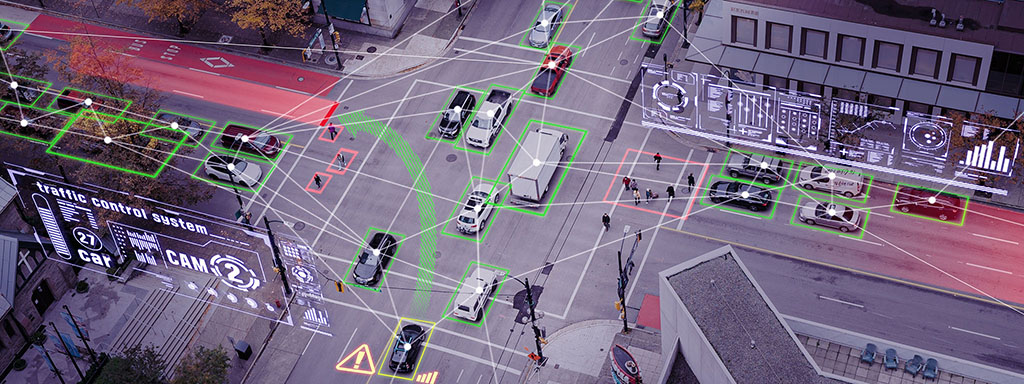In today’s fast-paced world, License Plate Recognition (LPR) technology has become integral to modern security systems, traffic monitoring, and parking management. From monitoring busy intersections to ensuring quick and smooth access control, the role of LPR cameras in automating vehicle identification cannot be ignored. We often don’t realize how many aspects of our lives have been streamlined thanks to LPR technology, and we haven’t even begun exploring the vast potential for future innovation.
However, not all ALPR cameras are the same, and selecting the right device requires careful consideration. One mustn’t forget that the choice of camera for license plate recognition directly impacts the performance and reliability of the installed system! This article will walk you through the key features to consider when choosing an LPR device, as well as the benefits of automated license plate recognition systems and the problems they can solve.

Defining LPR: License Plate Recognition Explained
License Plate Recognition (LPR) is a technology used to automatically identify and read the vehicle’s license plates. Simply put, cameras equipped with specialized software capture images of license plates, which the software then converts into text using Optical Character Recognition (OCR) technology.
While these cameras rely on OCR technology, their license plate recognition software is far more advanced, incorporating many additional features that make accurate license plate recognition possible. Depending on the system’s settings, LPR installations can work in real-time, capturing license plates and providing immediate data to law enforcement, tolling systems, parking management software, etc. They can automate vehicle identification processes, improving efficiency and security in a variety of sectors, such as traffic management, access control, and surveillance.
What Are the Benefits of an LPR System?
With all this advanced technology at our disposal, you may be wondering what benefits it brings to our everyday lives. Let’s delve deeper into this topic! License Plate Recognition (LPR) cameras are quickly becoming essential tools in the transition to smarter, more sustainable cities. As urban areas grapple with challenges like pollution, heavy traffic, accidents, and security concerns, LPR technology is here to provide a compelling solution to these pressing issues.
By capturing and linking license plate data (and in more advanced cases, details such as make, model, and color of the vehicle) to associated information like vehicle ownership, location, and parking status, LPR cameras enable cities to manage traffic flow, enforce laws, and improve security with greater efficiency.

The vast amount of data generated by LPR systems opens the door to a range of smart city innovations, from reducing congestion and emissions to creating cleaner, safer urban spaces. With these capabilities, LPR technology not only addresses current urban issues but also paves the way for a future of nicer, more sustainable cities.
The Impact of LPR Cameras on Urban Security and Law Enforcement
LPR cameras are essential for enhancing urban surveillance and security. They actively assist law enforcement by providing real-time monitoring of vehicle activity, enabling quick responses to potential threats, and facilitating the identification of suspect vehicles. Additionally, their integration with other systems, such as criminal databases, further empowers law enforcement agencies to proactively address crime and enhance public safety.
Furthermore, LPR cameras enhance perimeter security by tracking unauthorized access in restricted areas. Their presence acts as a deterrent to criminal activity, while the integration with other systems, such as access control systems, provides a comprehensive security solution.

The Role of License Plate Recognition in Improving Traffic Management & City Livability
In urban areas, these cameras play a crucial role in optimizing traffic flow by gathering real-time data on vehicle movements. Then advanced algorithms analyze this data to reduce congestion, improve traffic light sequences, and assist in urban planning. For instance, during rush hours, LPR cameras can dynamically adjust traffic signals to ease congestion. Additionally, LPR systems can reduce pollution by restricting the entry of specific vehicles into the city and establishing traffic-free zones for residents, thus promoting cleaner air in urban areas.
Beyond traffic management, LPR systems enhance city livability by supporting smart transportation solutions. They automate tasks like spot allocation and payment for intelligent parking; monitor bus lane usage, penalize unauthorized vehicles, and ultimately promote sustainable urban planning. These benefits make LPR cameras indispensable for enhancing public safety, improving urban traffic flow, and fostering smarter, more livable cities.

Harnessing LPR Technology for Traffic Management: 15 Real-World Applications and Benefits
As illustrated in the examples above, License Plate Recognition technology is transforming the idea of smart cities by automating processes that greatly enhance the sustainability, safety, and overall livability of urban environments. In our daily routines, we often overlook the many ways LPR technology impacts our lives.
Let’s explore some of the most common use cases where LPR has made a meaningful impact, transforming urban management and enhancing the overall quality of life in the cities.
- Low Emission Zone Enforcement: In areas of ecological concern, LPR helps keep high-emission vehicles at bay, ensuring cleaner urban air and fostering a greener environment. By promoting low-emission zones, this technology encourages the renewal of car parks with eco-friendly vehicles, gradually reducing urban pollution. This shift supports cleaner air today and fosters a sustainable, greener future by motivating vehicle owners to choose lower-emission options.
- Optimizing Parking Management: LPR cameras monitor real-time parking occupancy levels, guiding drivers to available spots and reducing parking congestion. This automated LPR parking system results in a smoother parking experience for residents and visitors, minimizing frustration and costs and saving time.
- Automated Toll Collection: Automatic license plate recognition facilitates cashless, barrier-free tolling by automatically capturing license plates as vehicles pass through toll plazas. This installation promotes free-flow traffic, especially during peak hours, by removing the need for cars to stop.
- Tracking Customer Behavior in Retail: Retail establishments can also leverage LPR systems to analyze parking patterns, peak shopping hours, customer visit frequency, and duration of stay. These insights can significantly assist executives in addressing business concerns and making vital decisions about marketing strategies and operational improvements.
- Efficient Vehicle Tracking at Airports: Similarly, airports also use ALPR cameras to track vehicle movement, making it easier for passengers to locate their parked cars and for airport authorities to monitor security by identifying unauthorized or suspicious activities.
- Traffic Flow Studies: Licence plate reader cameras offer a powerful tool for understanding and optimizing urban mobility. By precisely tracking vehicle movement and identifying congestion hotspots, LPR technology equips city planners with valuable insights into real-time traffic patterns. This data enables the development of smarter traffic management strategies, reducing delays and improving travel efficiency. With LPR-driven speed and flow analysis between key points, cities can better predict journey times, alleviate bottlenecks, and ultimately create cleaner, more accessible urban spaces.
- Carpool Parking Management: LPR systems streamline carpool parking, offering precise control over shared spaces and ensuring hassle-free access for users in smart cities. This would enhance the efficient use of parking areas while supporting eco-friendly transportation modes.
- More Efficient Parking Enforcement: LPR cameras allow parking control agents to swiftly check the status of vehicles and enforce parking regulations by scanning thousands of license plates in a short period.

- Reserved Lane Monitoring: A license plate identification system scans and monitors vehicles in restricted areas, such as bus or taxi lanes, and sends notifications to authorities regarding any violations, thereby reducing the need for manual enforcement and automating sanctions.
- Stolen/Wanted Vehicle Detection: License plate readers on police cars, are installed at key city locations to automatically detect and flag stolen or wanted vehicles, providing law enforcement agencies with real-time data for immediate action.
- Improving Safety at Bridges and Tunnels: LPR cameras monitor vehicles entering and exiting tunnels and bridges, assessing speed and time spent within the structure, and providing valuable data for traffic safety and security measures.
- Real-Time Speed and Wrong-Way Detection: LPR technology can also detect speeding or wrong-way driving, providing real-time warnings to drivers to prevent accidents.
- Logistics and Transportation Management: Companies dealing with logistics can use ALPR to track vehicle movements, improving transportation management and streamlining courier systems by monitoring arrivals and departures.
- Military Control Zone – High-Security Access Control: In sensitive military zones, LPR technology is essential for ensuring only authorized vehicles enter. Instantly verifying plates against secure databases, LPR strengthens perimeter security and enables swift responses to unauthorized access—making it indispensable in high-stakes environments.
- Red Light Enforcement: LPR technology is a critical tool for enforcing red light compliance, capturing license plates of vehicles that violate traffic signals. By identifying offenders in real-time, LPR helps reduce dangerous intersection behaviors, enhance road safety, and support law enforcement efforts to maintain order—ultimately making streets safer for everyone.
The diverse applications of licence plate recognition technology across various fields truly pave the way for a better and more efficient urban environment, enhancing not only the operational performance but also the sustainability of our modern cities. It’s exciting to see how these advancements can positively impact our daily lives!
Key factors to consider when choosing an LPR camera
It’s crucial to consider several key factors when selecting the right system to ensure optimal performance and reliability across various applications, from traffic monitoring to parking management. Here are a few important aspects to evaluate before making a purchase:
- Image Quality, and Computing Abilities: A high-resolution LPR camera is essential for capturing clear and detailed images, ensuring that license plates can be accurately recognized even in challenging weather and lighting conditions. The higher the resolution, the more precise the image, which is vital for capturing small plate details and improving recognition rates.
Additionally, it’s essential to consider the processing power of the device, as live streaming, real-time vehicle detection, LPR, and MMR all require substantial resources. Always carefully assess your project’s needs— for example, using a camera with excessive megapixels may generate redundant data, slowing down processing and quickly filling up memory.
Consult our experts to find a solution tailored to your requirements, ensuring optimal resolution and computing capabilities to handle tasks like capture and video streaming.
- Integration Capabilities: When choosing a component for your system, it’s important that the device provides data in a format that is easy to understand for ANPR solutions, so integrators don’t waste time converting it. This makes the integration process smoother and more efficient. It’s also helpful if the device supports multiple interfaces (like ONVIF Profile M or MQTT), as many solutions can handle these interfaces natively, allowing for a plug-and-play setup. This ensures quicker, hassle-free integration tailored to your system’s needs, resulting in less downtime during integration and preventing potential revenue loss.
It’s also essential to consider the time your team will spend setting up and operating the system. Ideally, the system should enable real-time data sharing across platforms, allowing for immediate alerts or automated actions based on license plate recognition. Moreover, effective integration streamlines data management by centralizing information from various sources, simplifying analysis, and improving response times. It is also scalable to meet your needs and allows for flexible adjustments based on your project’s requirements.
- Lane Coverage and Range: The camera’s field of view and range play a significant role in ensuring comprehensive coverage. Wider coverage allows for monitoring more area, which means multiple lanes can be tracked simultaneously. When selecting a component, it’s important to consider your project’s specific needs and choose one with the ideal coverage to ensure effective monitoring of the required space. The range, or the distance at which the camera can accurately identify license plates, is also vital. Selecting a camera that matches your specific monitoring needs ensures comprehensive surveillance and reliable recognition.
- Reliability, Durability, and Weather Resistance: LPR cameras are often deployed in outdoor environments where they must withstand harsh weather conditions. Cameras with a high IP rating, indicating resistance to dust and water, are essential for long-term durability. Additionally, selecting cameras built with robust materials ensures that they will maintain optimal performance in extreme weather, such as rain, snow, or intense heat.
There are also LPR cameras equipped with built-in heaters and coolers (e.g., Adaptive Recognition’s Vidar ALPR camera), making them ideal for extreme weather conditions. If your project is deployed in geographical locations with harsh climates, such as the Arctic or deserts, then these specialized cameras can ensure reliable performance. Reliability and durability are key to avoiding downtime and ensuring continuous monitoring.
By carefully considering these factors—resolution and image quality, integration capabilities, field of view, range, and environmental durability—you can choose an LPR camera system that meets your specific operational needs while ensuring consistent and accurate performance.
Conclusion
In conclusion, License Plate Recognition (LPR) technology has emerged as a transformative force in urban management, offering a multitude of benefits that enhance the efficiency, safety, and sustainability of our cities. From optimizing traffic flow and automating parking systems to bolstering security measures, LPR cameras play a pivotal role in streamlining various processes that impact our daily lives—often without us even realizing it.
As cities evolve into smarter environments, understanding the myriad applications of LPR technology allows us to appreciate its value in fostering a greener and more livable urban space. When considering the integration of LPR cameras into your projects, it’s essential to evaluate key factors such as resolution, ease of integration, and adaptability to your specific needs. By carefully selecting the right LPR system, you can unlock its full potential, ensuring optimal performance and reliability in addressing the challenges faced by modern cities.
Opting for LPR technology goes beyond improving urban management today; it actively contributes to cleaner, more efficient cities that positively impact everyday life. This technology directly supports a healthier, more sustainable environment, and each advancement in LPR brings us closer to cities where quality of life is prioritized, making a meaningful difference for current and future generations alike.

